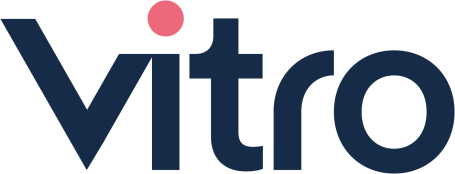
Reskilling, Upskilling, and Employee Development
By Dieter Deuer
Developing Skills, Fostering Growth; Reskilling, Upskilling and Nurturing Employee Progress
In today's evolving job market both domestically and internationally, it is crucial for companies to invest in reskilling, upskilling and nurturing their employee's development. As we continue to drive the lessons learned into our industry, we want to share our observations about the challenges we face in our role and how technology can serve as a guiding force on this journey.
The Importance of Reskilling, Upskilling and Employee Development
The global workforce is experiencing a transformation. Jobs that were once considered secure are now at risk of automation due to technologies like AI, and outsourced on scale. At the same time new industries are emerging at pace. To remain relevant in this landscape and even thrive, companies must cultivate agility and adaptability within their teams. This requires equipping our team members with the skills and knowledge to navigate this changing terrain.
However, it's not just about maintaining competitiveness. Providing opportunities for employee development can also have an impact on morale and retention, as discussed in Mikes blog about EVP (Employee Value Proposition). We all recognise that when team members perceive growth and learning opportunities within their roles, it enhances engagement and dedication.

The Obstacles
Even though we can see the advantages of reskilling, upskilling and employee development there are challenges to overcome when it comes to implementing these practices. One major hurdle is identifying which skills are in demand. It's not always easy to predict skill requirements, and assessing the existing skills of employees can be a sizable task given the data collection involved.
This leads us to another challenge; finding the time and resources needed for investing in employee development. Training programs can be expensive and aligning these costs and initiatives with work responsibilities can be a delicate balance for both employers and employees.
The Price and Consequences of Inaction
In a world where AI tools are becoming more prevalent in the workplace those who don't adapt or stay stagnant become increasingly vulnerable. Companies that choose not to invest in reskilling, upskilling and employee development face risks of falling behind their competitors in developing a workforce prepared to tackle emerging challenges or seize opportunities.
Employees too can suffer from this lack of action. Without chances to acquire skills they may find themselves stuck in roles or worse, declining industries and declining prospects.
How Technology Drives Change
Whilst it is acknowledged that technologies like AI come with risks, they also offer opportunities for progress and can accelerate the adoption of crucial changes. Technology emerges as an ally in tackling these challenges. It excels at identifying gaps in skills and provides training.
Insights and analytics driven by AI-empowered companies help to assess the skill profiles of their workforce and can identify areas that are ready for improvement. Online learning platforms provide a cost-effective alternative to in person sessions, but that’s not all they can do (as we discussed in our Blog on AI)
Furthermore, learning experience platforms (such as PXPs), like Edcast from Cornerstone or Applaud HR, both possess the capability to gather and customise content according to learners needs, and are great at nurturing an organisation focused on skills development. It is worth noting that it’s a buyers’ market; and that market, is teeming with user-friendly solutions. Whether for recruitment, HR management, performance tracking, or facilitating learning who all support improved focus on user experience. TIP: put a day aside for some personal, low-level benchmarking to understand what good looks like in the marketplace and see how you currently compare (Josh Bersin has plenty to say on this if you need an additional point of reference).
Acting Today
Apart from methods such as surveys and gap analysis, for assessing skills, how else can you initiate change today using the latest technology? Here’s my view:
Start by understanding the desired outcomes you aim to achieve (e.g. Are you looking to increase your talent intelligence?). After that let’s consider the development of connected learners (I recently read a great article by Gartner refreshed in May 2022 on this which talks perfectly to this point). One excellent example of this is through growing your “on the job learning” practices. We all know that this approach provides value for money despite its challenges.
An effective method to achieve this is by democratising your development journeys to your team members. Implementing Continuing Professional Development (CPD) models empowers individuals to drive, track and evaluate their own growth.
Make it convenient for those who maintain recognised CPD to access their information and use it both as evidence during promotion, progression, and performance discussions, as well as evidence for maintenance of their professional accreditations. This approach allows you to address needs with a solution.
Tip: Tools like Learning Management Systems (LMS) already offer AI CPD tracking features that include compliance tracking, regulatory reporting, ROI (Return on Investment) tracking and workforce planning. Take a moment to consider assessing the tools you already have in place to understand if they could already be leveraged today?
Another approach could be refocusing on skills (a real buzzword at the moment, but certainly not a new concept). Have you considered utilising AI powered skills assessment? These advanced tools harness the capabilities of intelligence to evaluate your workforce’s skill set and provide intelligence on areas for improvement.
You can make use of AI algorithms to perform skills assessments or efficiently analyse performance data. One incredibly useful tool is the aforementioned Applaud, an AI powered talent intelligence platform and user interface that helps organisations identify areas where skill sets are lacking. This tool keeps track of employee growth and offers suggestions, for upskilling and reskilling. Another example is Thrive, an AI powered assessment solution integrated into HR platforms like Workday and SAP SuccessFactors. They use machine learning to evaluate employees’ skills and capabilities while providing recommendations for development and upskilling.
Navigating the ever-changing job market requires a nimble approach. From upskilling and reskilling, to fostering employee development, the role of technology cannot be overstated. Solutions like Cornerstone's AI-powered Continuing Professional Development tracking are offering new avenues for accurately assessing and developing talent.
Conclusion
However, the big caveat to all this is… with the technology available to us, we must not overlook the importance of the human factor. Investing in your employees goes beyond staying competitive; it's about fostering a culture of growth and empowerment that boosts morale and encourages employee retention (please enjoy our CEO's blog on Employee Value Proposition here).
While the challenges we face are significant they shouldn't discourage us from taking steps today. As you embark on, or continue your journey of skill development and employee growth, remember that obstacles are stones towards achieving greater success as an organisation.
So, final thought, we're all on this journey together so let’s maximise our experience by sharing, and nurturing a culture that values learning and personal development and don’t ever let Best get in the way of Better! If you find yourself grappling with the complexities of this process, feel free to ask, as we have been through this process.
We collaborate closely with our clients to develop strategies for adopting AI technologies and addressing all the topics discussed in this blog post, as well as our previous posts. We share how we have assisted in creating models that not only attract talent but also retain your most exceptional employees. So, if you have any doubts or need expert guidance don't hesitate to #AskVitro #VitroInsight.

About the author
Dieter Deuer
Dieter is our Head of Technology and Innovation, he utilises his strategic leadership skills in Learning and HR to enhance the learning experience through streamlining processes. With over twenty years of expertise, Dieter has played a crucial role in harnessing technology to advance learning.
We need your consent to load the translations
We use a third-party service to translate the website content that may collect data about your activity. Please review the details in the privacy policy and accept the service to view the translations.

